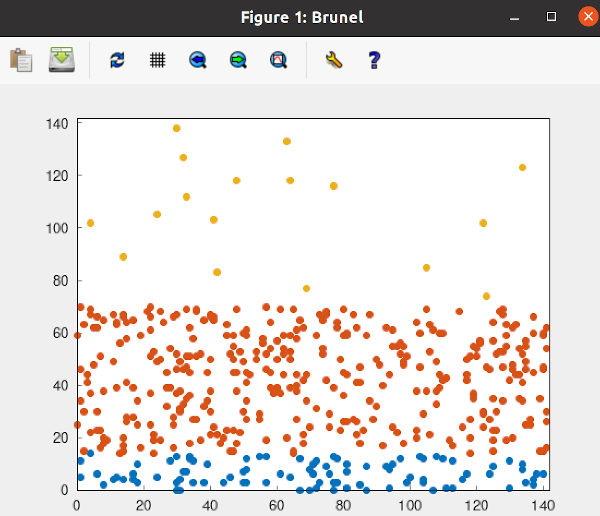(This is a clean re-write of Spice - the SNN simulator I developed for my PhD. It is work in progress. It is feature-complete but so far only supports single-core CPU simulation.)
 Photo by Daria Yakovleva
Photo by Daria Yakovleva
Spice (/spaɪk/) is a state of the art spiking neural network (SNN) simulator. It features:
- User-defined models
- High performance
- CPU and GPU backend
- Multi-GPU support
- Simple, intuitive API written in C++20
 Spice compared with 3 other state of the art simulators on 3 popular SNN models.
Spice compared with 3 other state of the art simulators on 3 popular SNN models.
Here is a simple SNN implemented in Spice to give you a taste of its API (#include's etc. omitted for brevity):
struct poisson {
bool update(float dt, auto& rng) const {
return util::generate_canonical<float>(rng) < (20 * dt);
}
};
struct lif {
struct neuron {
float V = 0;
int Tref = 0;
};
bool update(neuron& n, float dt, auto) const {
if (--n.Tref <= 0) {
if (n.V > 0.02) {
n.V = 0;
n.Tref = 20;
return true;
}
n.V -= n.V * dt * 50;
}
return false;
}
};
struct fixed_weight {
float weight;
void deliver(lif::neuron& to) const { to.V += weight; }
};
int main() {
int const N = 20000;
float const dt = 1e-4;
float const delay = 15e-4;
snn brunel(dt, delay, {1337});
auto P = brunel.add_population<poisson>(N / 2);
auto E = brunel.add_population<lif>(N * 4 / 10);
auto I = brunel.add_population<lif>(N / 10);
brunel.connect<fixed_weight>(P, E, fixed_probability(0.1), delay, {2.0 / N});
brunel.connect<fixed_weight>(P, I, fixed_probability(0.1), delay, {2.0 / N});
brunel.connect<fixed_weight>(E, E, fixed_probability(0.1), delay, {2.0 / N});
brunel.connect<fixed_weight>(E, I, fixed_probability(0.1), delay, {2.0 / N});
brunel.connect<fixed_weight>(I, E, fixed_probability(0.1), delay, {-10.0 / N});
brunel.connect<fixed_weight>(I, I, fixed_probability(0.1), delay, {-10.0 / N});
for (int i = 0; i < 300; i++) {
brunel.step();
for (auto spike : brunel.spikes(0))
printf("%d ", spike);
printf("\n");
}
}- C++20 compiler (GCC 10+ ✔ Clang 10+ ? MSVC 17+ ✗)
- CMake 3.12+
- gnuplot (optional, for visualizing SNN activity inside the samples)
git clone https://github.com/denniskb/spice2.git
cd spice2
git submodule update --init --recursive
mkdir build
cd build
cmake -DCMAKE_BUILD_TYPE=Release ..
make -j 8(Please note: The files configure.sh and build.sh are used by vscode tasks and should not be invoked directly.)
To verify that everything worked you can run one of the samples. Still inside the build folder do:
./samples/brunelwhich should print the SNN's firing pattern as JSON-formatted output to the terminal:
{
"name": "Brunel",
"spikes": [
[10533,11015,11209,...],
[10310,11115,11884,...],
...
]
}
If you'd like the samples to produce visual instead of text-based output, you should turn on the spice_use_matplot option, either by ticking the box inside cmake-gui, or via the command line (still inside build):
cmake -Dspice_use_matplot=ON ..
make -j 8You'll also need to install gnuplot, on Linux via:
sudo apt install gnuplotIf you re-run brunel now you should see an animation similar to:
Spice comes with a bunch of pre-defined vscode tasks to simplify building it and running samples/tests/benchmarks...
git clone https://github.com/denniskb/spice2.git
cd spice2
git submodule update --init --recursiveF1→Tasks: Run Build Task→Configure→user *
F1→Tasks: Run Build Task→Build→release **
* only has to be run once
** has to be run every time you want to build, is invoked automatically when you try to run samples/tests/benchmarks after having made changes to the code
In order to run a sample:
F1→Tasks: Run Test Task→Samples→type the name of the sample
If you want to use Spice as a library inside your own project, by far the simplest way is to add the Spice repository as a submodule to your repository and then add it to your CMakeLists.txt via add_subdirectory(), after which you'll be able to link against the spice target.
For a thorough guide on how to use Spice, including samples, tutorials, and an API reference, please consult the wiki.
In reverse chronological order:
- Simulating Spiking Neural Networks on Multiple GPUs - When a Microsecond is an Eternity (Unpublished PhD thesis)
- Even Faster SNN Simulation with Lazy Event-driven Plasticity and Shared Atomics (HPEC 2021)
- Multi-GPU SNN Simulation with Static Load Balancing (IJCNN 2021)
- Faster and Simpler SNN Simulation with Work Queues (IJCNN 2020)
Developers will additionally want to turn on the spice_build_tests and spice_build_benchmarks options inside cmake:
git clone https://github.com/denniskb/spice2.git
cd spice2
git submodule update --init --recursive
mkdir build
cd build
cmake -DCMAKE_BUILD_TYPE=Release -Dspice_build_tests=ON -Dspice_build_benchmarks=ON ..
make -j 8Or, using vscode instead:
git clone https://github.com/denniskb/spice2.git
cd spice2
git submodule update --init --recursivefollowed by:
F1→Tasks: Run Build Task→Configure→developer
Spice defines additional tasks specifically for developers:
F1→Tasks: Run Build Task→Build→release/debug/perf
F1→Tasks: Run Test Task→Samples/Unit Tests/Benchmarks
Please use the .clang-format file provided in the root folder to format all your code.
Please format/structure all your commit messages according to this guide.
Spice uses Semantic Versioning 2.0.0. Please update the project version whenever you make changes to the code.
- Create an issue for the task you're working on if one doesn't exist already.
- Create a branch (off of master) with name
issue/[id]. - Make sure all tests pass (if you added new functionality, write tests to check it).
- Push your branch to the remote.
- Submit a pull request.
Use the --no-ff option when merging.
The wiki contains an entire section specifically for developers, detailing Spice's project structure, software architecture, and design philosophy. Also, the publications give a good overview over the pipeline and data structures.
